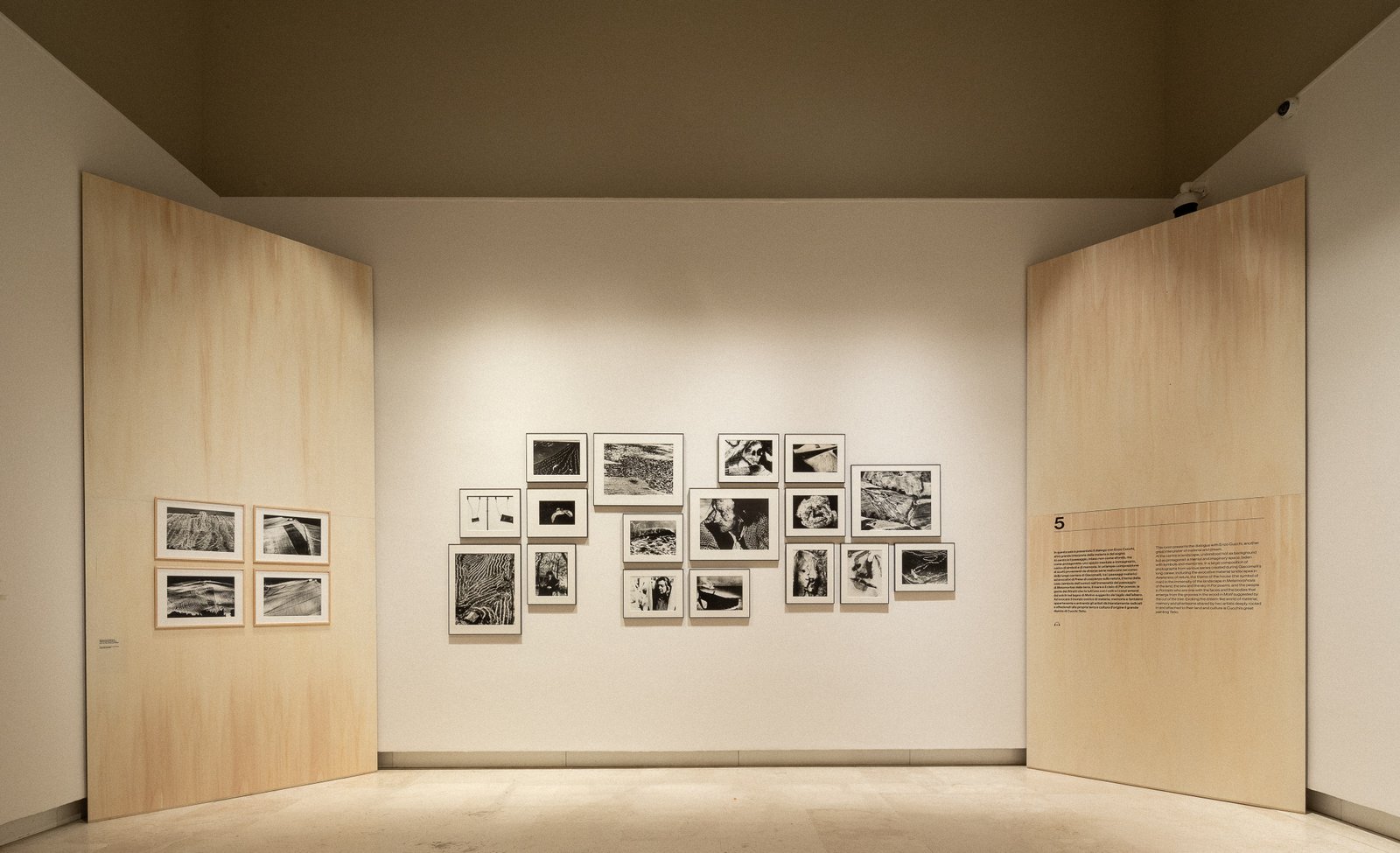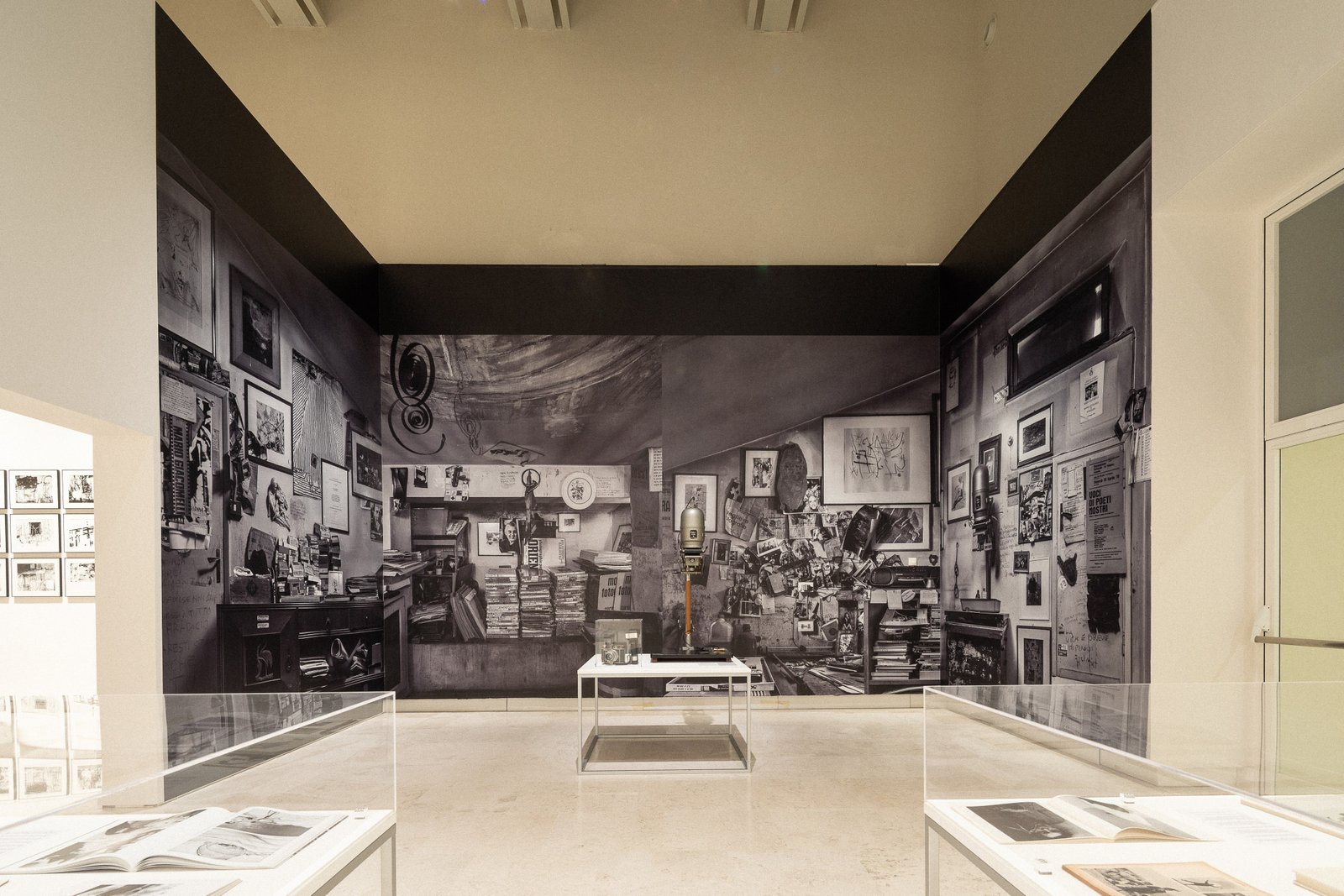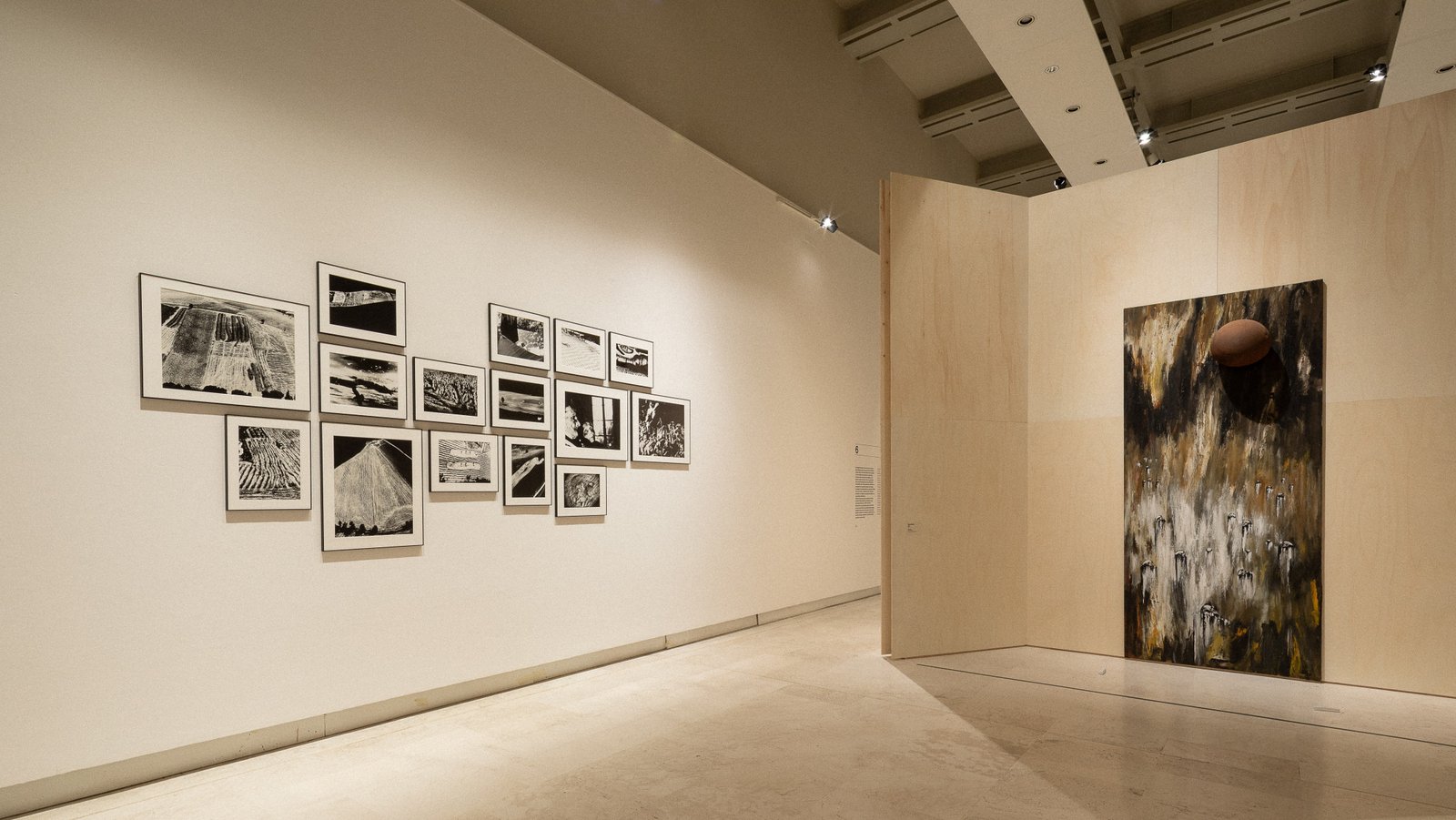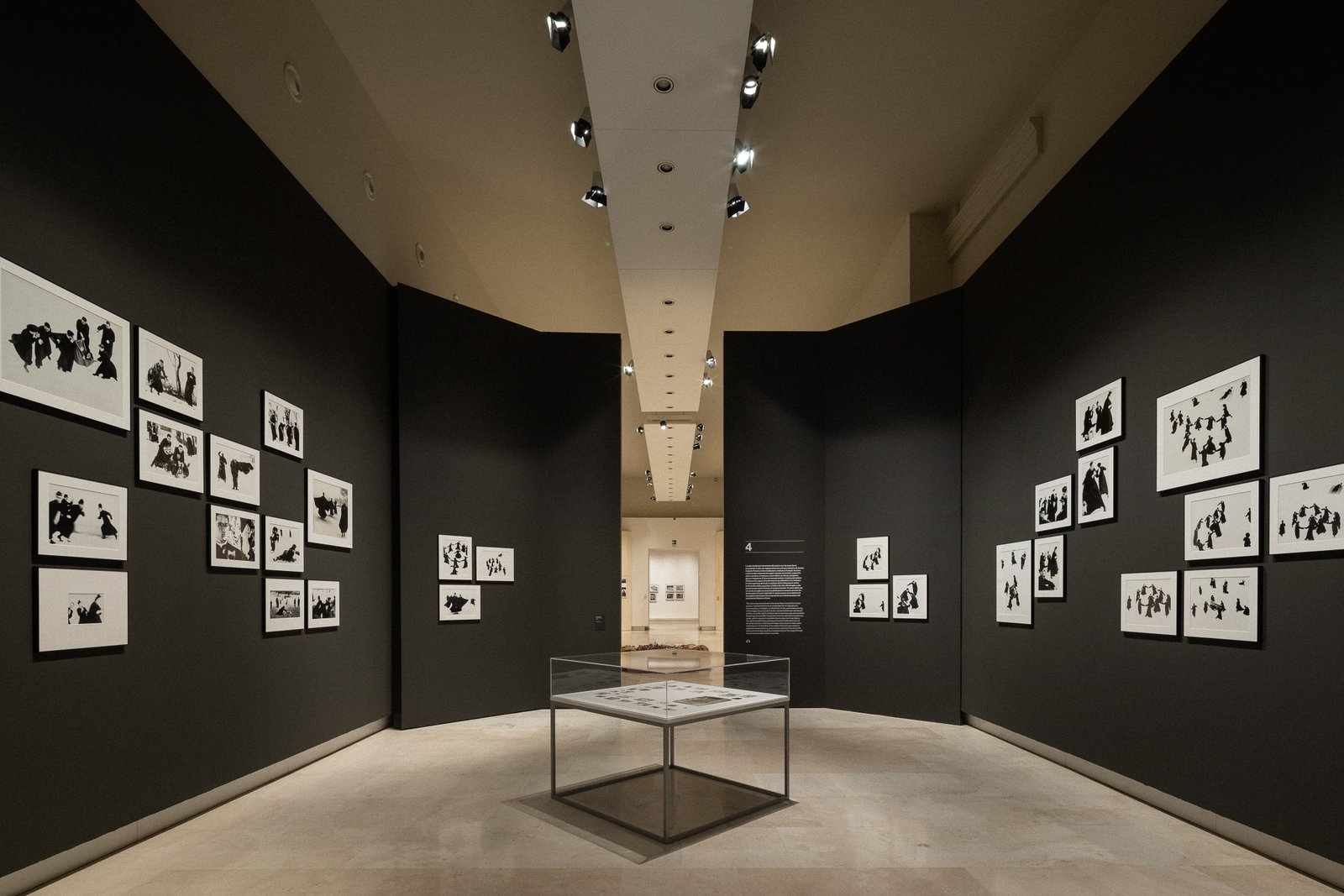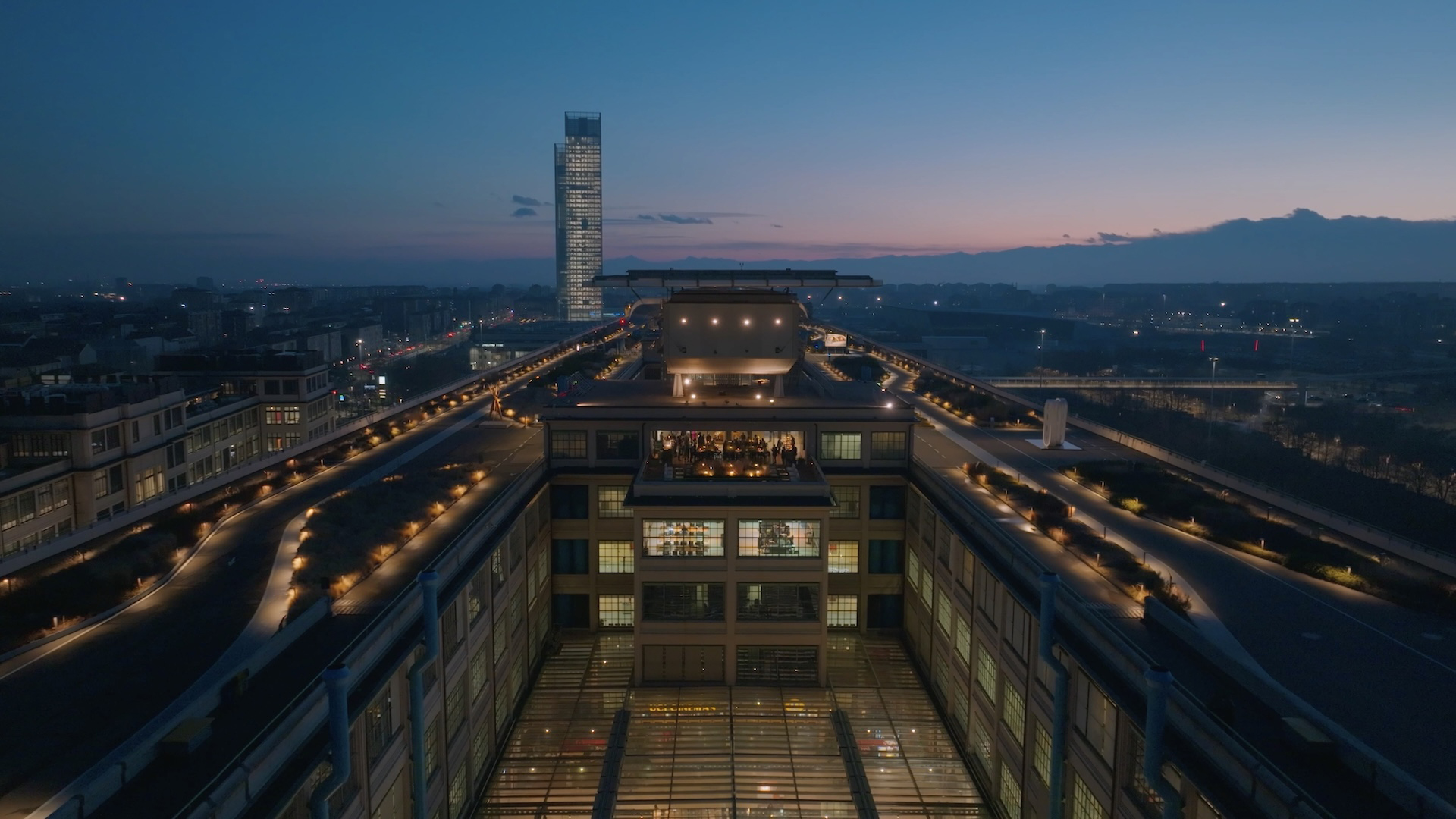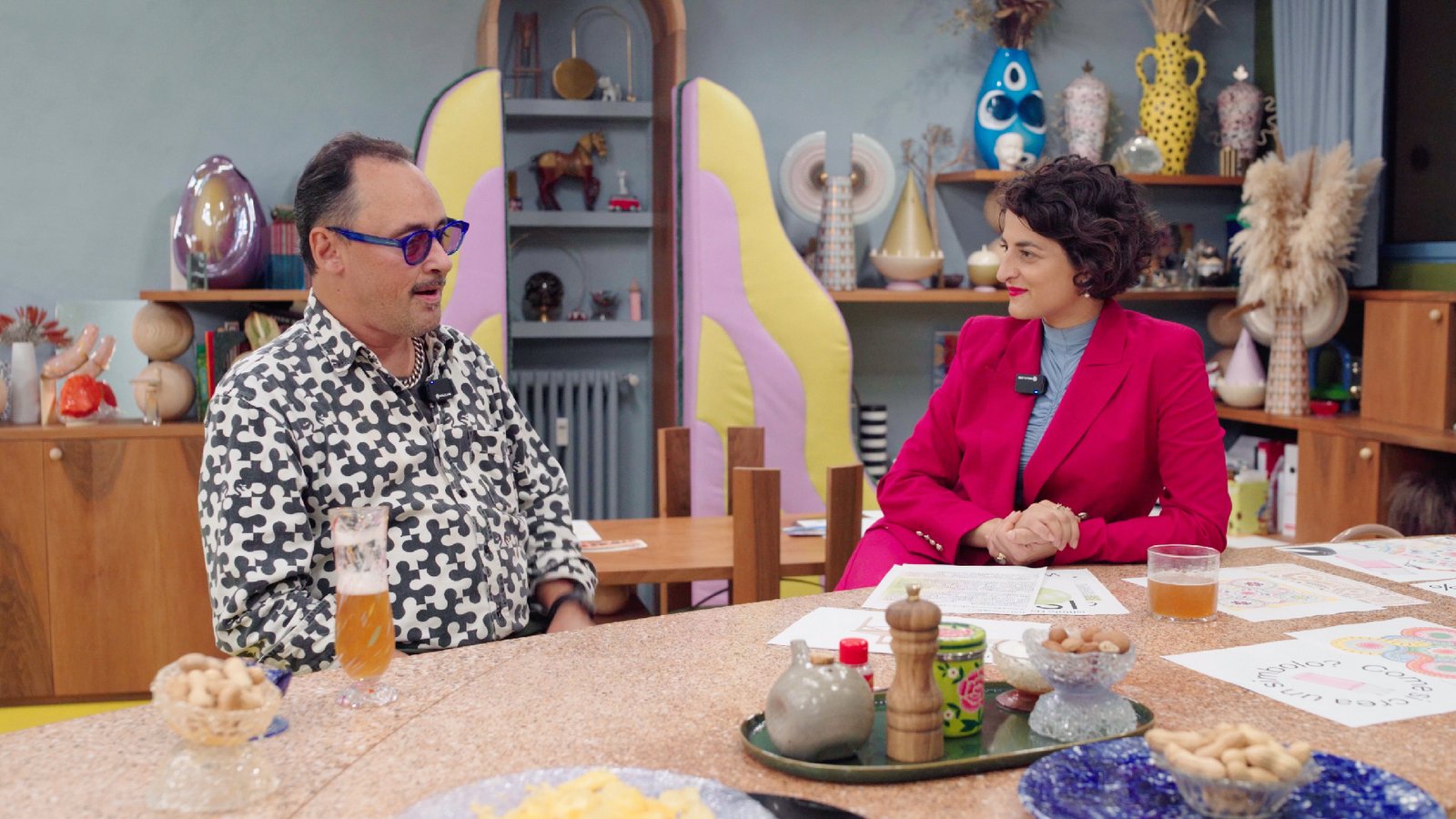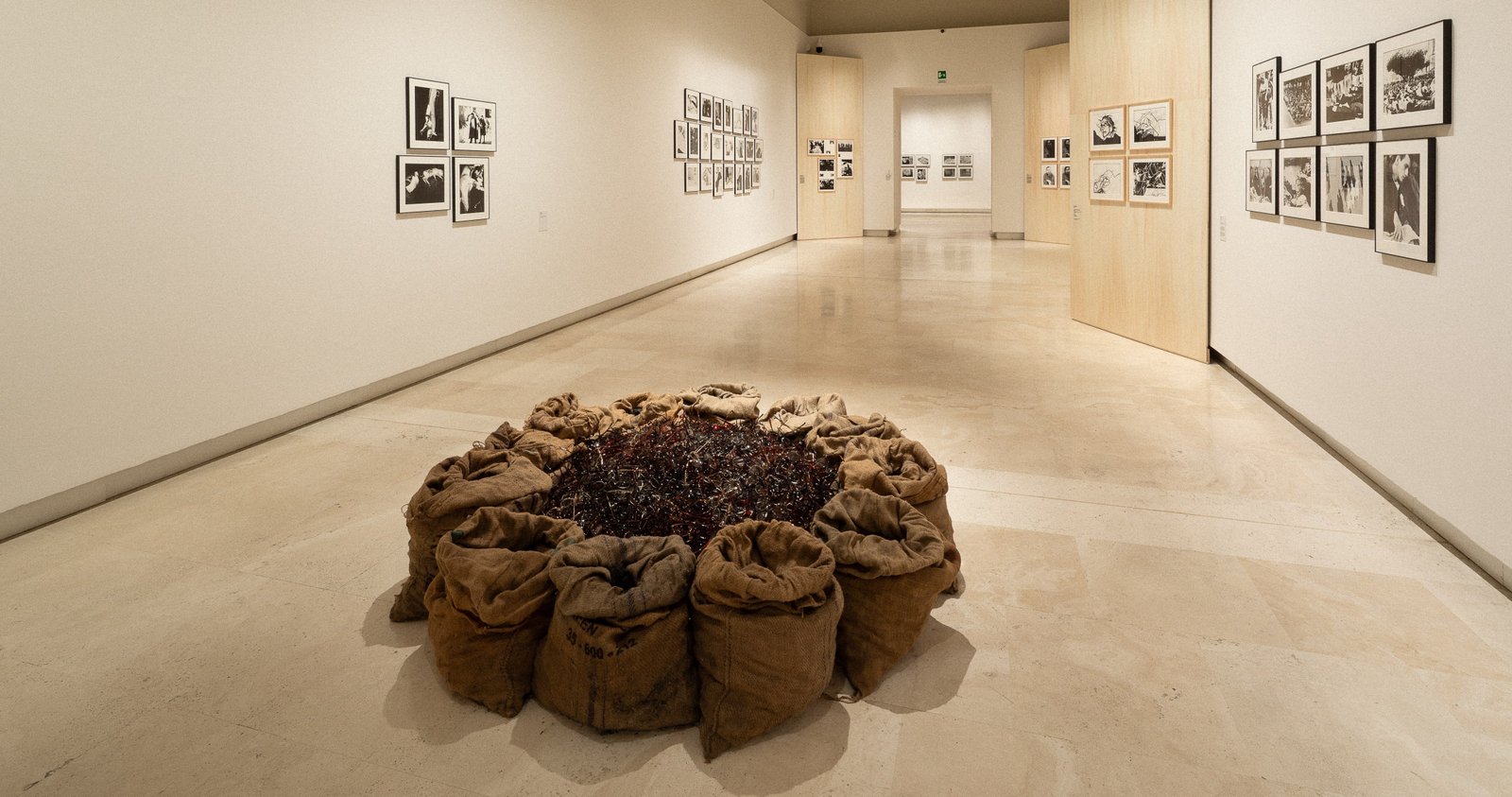
Mario Giacomelli: Art Beyond Photography in Rome
Rome’s Palazzo delle Esposizioni celebrates Giacomelli’s centenary with over 300 works in dialogue with artists like Burri, Kounellis, and Ballen.
On the centenary of the birth of Mario Giacomelli, one of the greatest photographers of the last century, the Giacomelli Archive has launched a series of initiatives to celebrate his artistic and cultural legacy. At the heart of these celebrations is a major exhibition project taking place simultaneously in Rome, at the Palazzo delle Esposizioni, and in Milan, at the Palazzo Reale, offering two complementary journeys.
The exhibition at Palazzo delle Esposizioni in Rome, curated by Bartolomeo Pietromarchi and Katiuscia Biondi Giacomelli, presents a vast selection of Giacomelli’s complete photographic work, showcasing his remarkable capacity to explore and contaminate different artistic languages. Over 300 original prints are on display, many previously unseen or never exhibited. The show focuses on the connections between Giacomelli's work and contemporary visual arts, with featured works by Afro (Afro Basaldella), Roger Ballen, Alberto Burri, Enzo Cucchi, and Jannis Kounellis dialoguing with the photographer’s poetic vision.
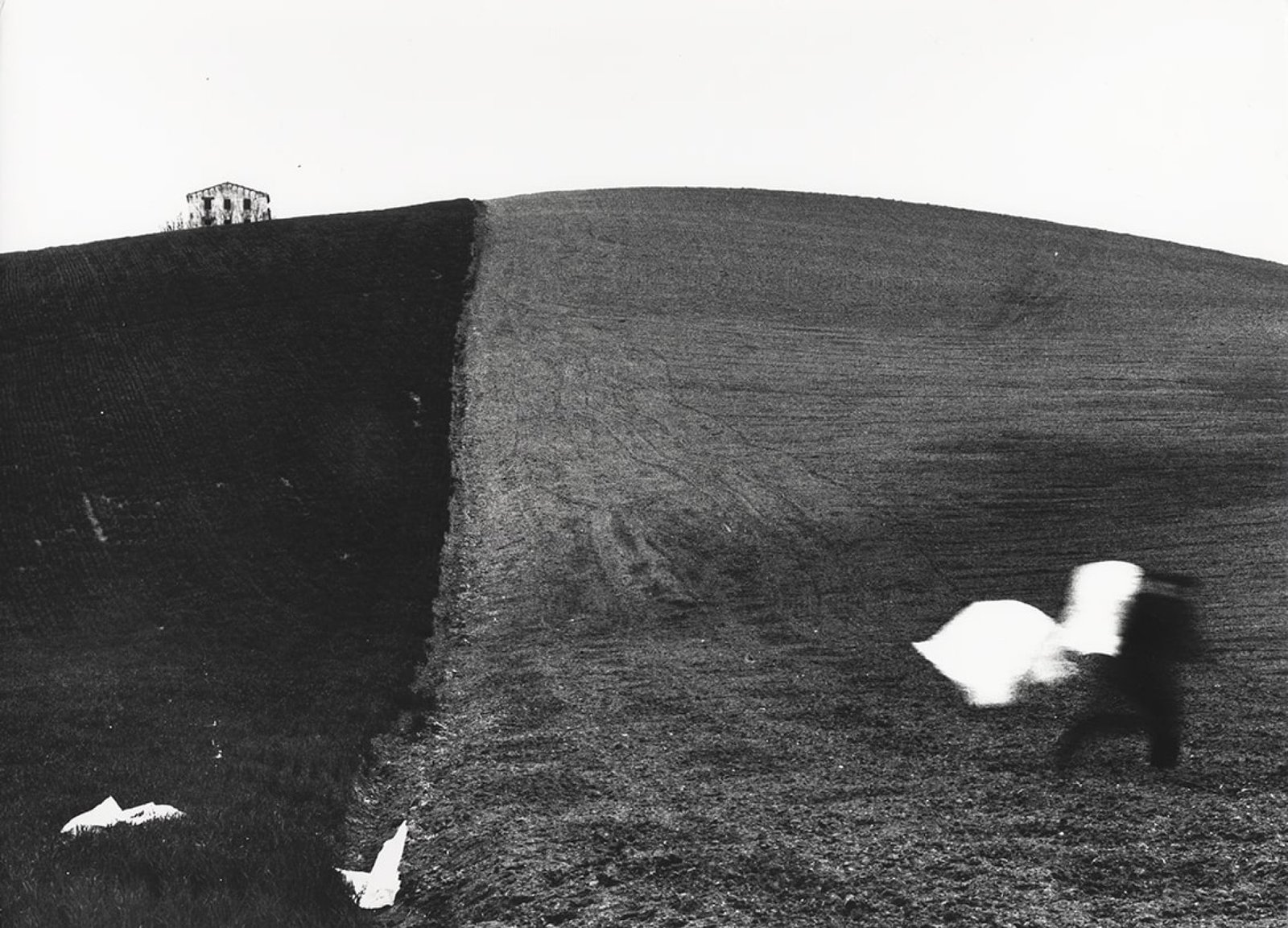 Mario Giacomelli, Metamorphosis of the Earth, 1990s | © Mario Giacomelli Archive
Mario Giacomelli, Metamorphosis of the Earth, 1990s | © Mario Giacomelli Archive
The exhibition opens with a comparison between Giacomelli’s photographs and the paintings and drawings of Afro and Alberto Burri, exploring the interplay between abstraction and materiality. Giacomelli’s experiments with photographic surfaces echo the material, alchemical, and painterly explorations of Afro and Burri, united by a shared inquiry into the density of black and white, contrast, and gesture.
Deeply drawn to Afro’s art and friend of Burri, Giacomelli saw art as a constant point of reference, evident in his experiments—especially in the darkroom. The exhibition includes his celebrated landscape series (from the 1950s to 2000), Motivo suggerito dal taglio dell’albero (1966–1968), Territorio del linguaggio (1994), and Bando (1997–1999).
Another significant and previously unseen dialogue unfolds around the theme of realism, through a comparison with the work of Jannis Kounellis. This section features the series Verrà la morte e avrà i tuoi occhi (1966–1968), E io ti vidi fanciulla (1993–1994), Lourdes (1957), and Mattatoio (1960). Giacomelli’s affinity with this leading figure of Arte Povera emerges not only in subject matter but also in a shared aesthetic sensitivity rooted in peasant culture, materiality, and a deeply realist artistic vision.
These intense dialogues between Giacomelli and other artists also include an elective affinity with Roger Ballen, who has frequently acknowledged his admiration and artistic debt to Giacomelli. Their exchange is built around the Italian master’s later works, including Questo ricordo lo vorrei raccontare (2000), La domenica prima (2000), Astratte (1990s), and Per poesie (ferri e lenzuola) (1960s–1990s), offering a rich interplay of visual languages and artistic sensibilities.
I explored this further with Katiuscia Biondi Giacomelli, co-curator alongside Bartolomeo Pietromarchi of the two major exhibitions in Rome and Milan marking the artist’s centenary.
What distinguishes the Mario Giacomelli exhibition at Palazzo delle Esposizioni?
"The exhibition at Palazzo delle Esposizioni offers a new perspective on Mario Giacomelli, focusing on his identity as a photographer beyond the boundaries of photography itself. He didn’t like to call himself a “photographer”; in fact, he resisted any kind of label. His art, though grounded in photography, shows how reality isn’t objective but shaped by the gaze of the observer. His photography is evocative rather than descriptive—his works are pieces of reality that “breathe,” to use Giacomelli’s own words. They are fragments of lived experience, of memory, symbols, and signs treated like a painter might treat them—material in metamorphosis, reshaped again and again in pursuit of a final vision. Every form, every photograph serves to express the artist’s unconscious imagination in a continuous meditation on life. Giacomelli’s photography tells stories through the language of dreams and poetry. The darkroom played a vital role in his process; there, with his gestures and experimentation, he gave reality the appearance of his inner world. For him, photography was a mirror where his soul could reflect and recognize itself. Yet Giacomelli’s images aren’t only about him (although the performative aspect of his later works shows how closely life and art were connected for him, always starting from autobiographical facts). Ultimately, his work speaks of humanity, of each of us, because his language is universal and true.The Rome exhibition—and in its own way, the Milan one—brings all of this to life".
The exhibition involves a dialogue with other artists. Can you tell us more about that?
"The idea was to show how Giacomelli was a photographer who defied convention, whose attitude aligned more with art than with “pure” photography. The exhibition puts his work into conversation with that of major artists with whom he had a conceptual affinity—or in some cases, like with Alberto Burri and Enzo Cucchi, personal friendships. His photographs resonate in unison with the paintings of Afro and Burri. Giacomelli approached photography in an Informale (Informalism) manner, and in the '60s and '70s he created abstract, material paintings himself—one of which is on display. His work also connects to Arte Povera in the way he felt matter to be a vessel of memory. Works from the series Verrà la morte e avrà i tuoi occhi, Lourdes, Mattatoio, and Favola explore inner meanings with powerful poetic energy, harmonizing beautifully with a Jannis Kounellis installation.
The performative nature of Giacomelli’s later works, in which he becomes actor and director of intimate, autobiographical stories—constantly reflecting on life and death—finds a compelling counterpart in the photography of Roger Ballen, who has always credited Giacomelli’s visionary approach as an inspiration. The Roman exhibition is a visionary journey that’s sure to leave visitors astonished. It opens with an immersive room where Giacomelli’s images follow his own words—short, intense reflections on photography. It closes with a reproduction of his darkroom, including his legendary Kobell camera, which he used for fifty years, and his enlarger—symbols of his creativity. But his creativity wasn’t limited to post-production—it began at the moment of capture. Eight large display cases contain hundreds of contact sheets—a kind of behind-the-scenes look at the photo sessions for his final series Questo ricordo lo vorrei raccontare, which is displayed in the last room of the exhibition".
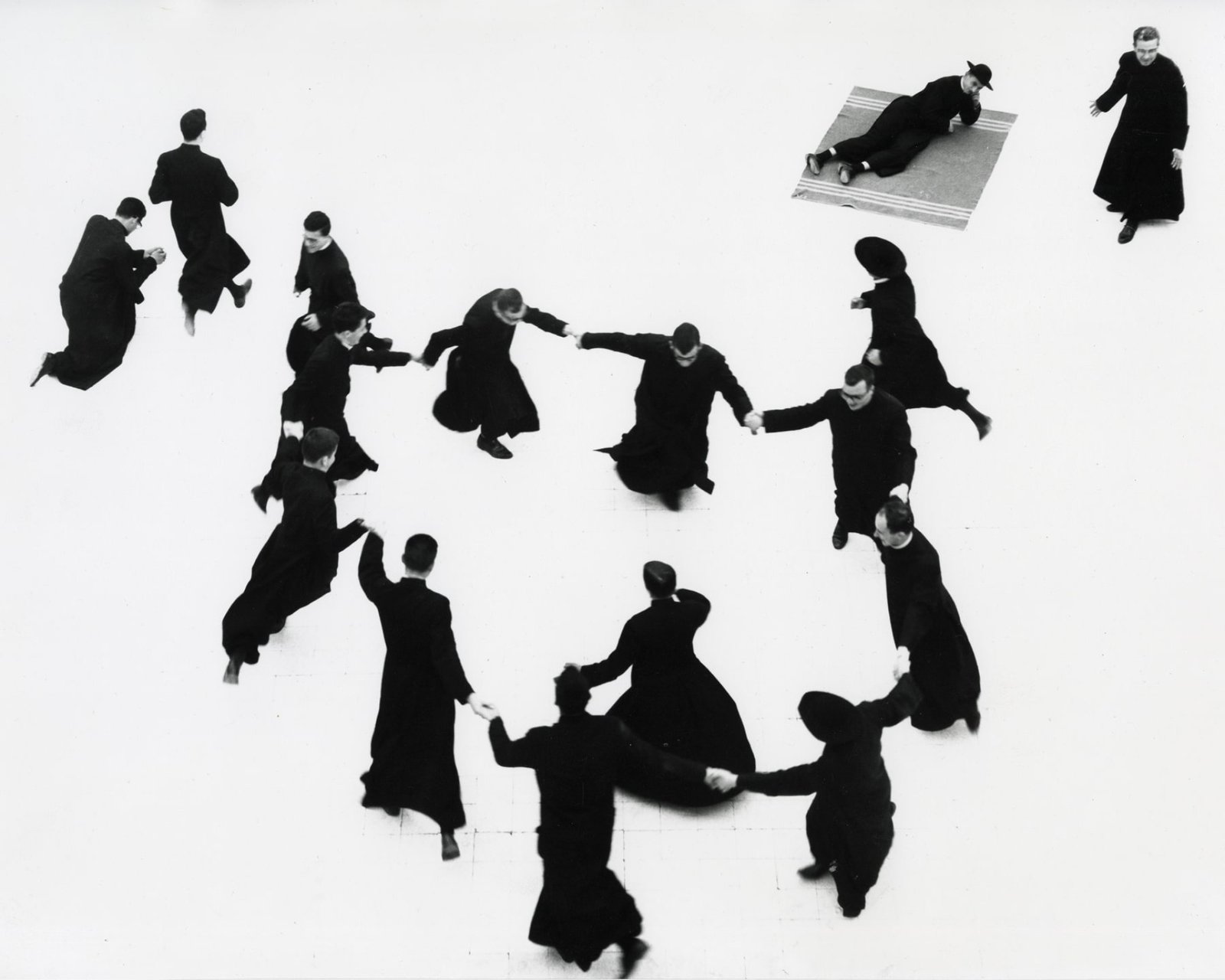 Mario Giacomelli, I Have No Hands That Caress My Face, 1961–63 | © Mario Giacomelli Archive
Mario Giacomelli, I Have No Hands That Caress My Face, 1961–63 | © Mario Giacomelli Archive
The unforgettable series Io non ho mani che mi accarezzino il volto (1961–1963), which brought Giacomelli international acclaim in the early ’60s, is presented here as a true installation. Can you tell us about the staging?
"Together with Bartolomeo Pietromarchi, we decided to recreate the circular motion of the spinning seminarian boys in the famous series inspired by Father Turoldo’s poem Io non ho mani. The installation moves between vertical and diagonal elements, voids and dynamic intersections—we wanted to convey the cinematic quality of the series and Giacomelli’s vision. These “little priests,” black smudges emerging from a consumed white background, reduced to silhouettes in motion, become like “birds set free in the sky.” The photographs in Io non ho mani che mi accarezzino il volto are a kind of representation of freedom".
Is there a personal memory of Giacomelli that you’ve never shared before?
"I remember him for his playfulness. Whenever he saw me, he would sing a song he’d dedicated to me—Signorinella pallida by Carlo Buti (because he was always so tanned and I was so pale!). Always that same song, with little gestures and a theatrical expression—one of the many rituals that shaped how we related to each other. But I also remember him for being beyond all conventions, unconcerned with judgment, always focused, savoring the smallest things to experience the wonder of being present in the world each and every day".
Cover image: Exhibition photograph, Mario Giacomelli. The Photographer and the Artist, Palazzo delle Esposizioni, Rome.
Camilla Boemio is a curator, writer and university consultant with a focus on interdisciplinary systems and an intersectional feminist perspective. She has curated projects such as Pera + Flora + Fauna at the Venice Biennale in 2022 and exhibitions such as TEN YEARS: BSR People 14-24 at the British School at Rome and The Bouvet Island at the National Etruscan Museum.
Co-founder of the non-profit AAC Platform, she has worked on innovative European projects with the Università Politecnica delle Marche. In 2022 she curated Segno Aperto by Bruno Lisi and Expanded Cinema with Ben River and Mathew Emmett.
Camilla has participated in major international events, such as the Nigerian pavilion at the Venice Biennale in 2016, and curated the book The Edge of Equilibrium in 2021, which was presented at fairs such as Artissima and Roma Arte In Nuvola.
